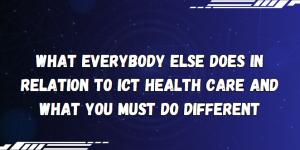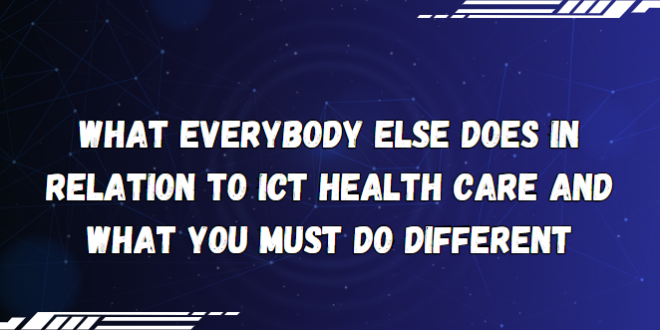The advancement of Information and Communication Technology (ICT) has revolutionized various industries, including the health care sector. ICT plays a crucial role in enhancing the efficiency, accessibility, and quality of health care services. However, while many organizations have adopted ICT in their operations, there are still some who are lagging behind.
One of the primary uses of ICT in health care is the electronic health record (EHR) system. This system allows health care providers to store and access patient information digitally, eliminating the need for paper-based records. EHRs enable efficient information sharing among different health care professionals, resulting in better coordination of care.
Additionally, ICT facilitates telemedicine, which enables remote diagnosis, consultation, and treatment. Through telemedicine, patients in remote areas can receive medical advice from specialists without the need for travel. This technology has proven particularly useful during the COVID-19 pandemic, where physical distancing measures are crucial.

Challenges in Implementing ICT in Health Care
Despite the numerous benefits ICT offers, there are challenges to its implementation in health care. One of the major obstacles is the cost associated with adopting and maintaining ICT infrastructure. Upgrading systems, training staff, and ensuring data security require significant investments.
Another challenge is the resistance to change. Health care professionals may be hesitant to adopt new technologies due to unfamiliarity or fear of disrupting established workflows. Overcoming this resistance requires effective training programs and clear communication about the benefits of ICT.
Furthermore, interoperability issues can hinder the seamless exchange of data between different systems. Without proper standards and protocols, sharing patient information across health care facilities becomes difficult, impacting the continuity and quality of care.
What You Must Do Different
To stand out in relation to ICT health care, it is essential to embrace innovation and stay updated with the latest technological advancements. Here are some steps you can take:
1. Invest in robust ICT infrastructure: Ensure your organization has the necessary hardware, software, and network capabilities to support efficient health care delivery.
2. Train and educate your staff: Provide comprehensive training programs to familiarize your staff with ICT tools and equip them with the necessary skills to leverage these technologies effectively.
3. Promote a culture of change: Encourage your team to embrace new technologies and foster a mindset of continuous improvement. Communicate the benefits of ICT adoption and involve staff in decision-making processes.
4. Prioritize data security: Implement robust security measures to protect patient information from unauthorized access or data breaches. Regularly update your systems and adhere to privacy regulations.
5. Foster collaboration and interoperability: Collaborate with other health care organizations and share best practices for seamless data exchange. Advocate for standardized protocols to ensure compatibility between different systems.
6. Embrace telemedicine: Explore telemedicine options to expand your reach and provide accessible health care services to patients in remote areas. Invest in reliable video conferencing tools and establish protocols for virtual consultations.
7. Continuously evaluate and adapt: Regularly assess the impact of ICT on your operations and patient outcomes. Seek feedback from staff and patients to identify areas for improvement and make necessary adjustments.
In Conclusion
ICT has transformed the health care industry, offering immense potential for improving patient care and overall health outcomes. While many organizations have adopted ICT, it is crucial to differentiate yourself by embracing innovation, investing in infrastructure, and promoting a culture of change. By staying ahead in the adoption and utilization of ICT, you can enhance efficiency, increase accessibility, and provide high-quality health care services to your patients.
Thank you for reading, and stay tuned for more interesting articles to come!
 Spacetimes A collection of the latest news and information from various trusted sources
Spacetimes A collection of the latest news and information from various trusted sources
